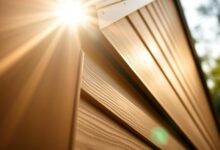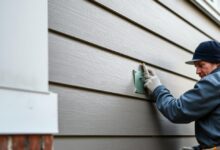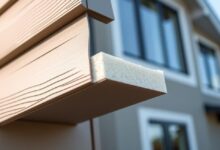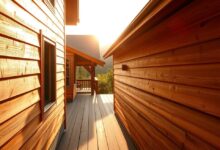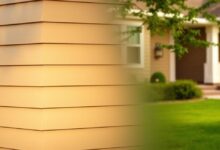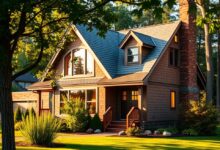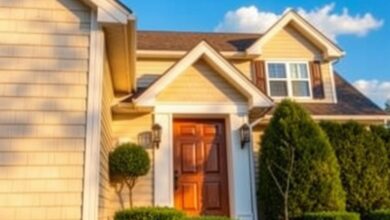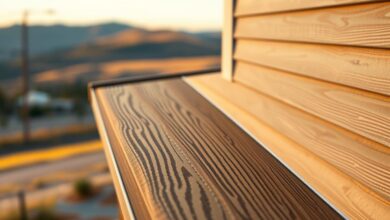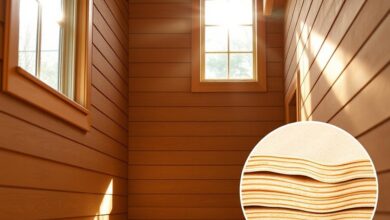Vinyl Insulated Siding: Durable, Efficient, and Attractive
Homeowners are choosing durable siding that looks good and saves energy. Vinyl insulated siding is a top pick because of its many benefits.
This siding keeps your home looking great and protects it from the weather. It also helps keep your home cool, saving you money on energy. Its strong build and nice look make it a favorite among homeowners.
Key Takeaways
- Durable exterior finish that withstands environmental conditions
- Enhances energy efficiency by minimizing heat transfer
- Attractive appearance that boosts home aesthetics
- Popular choice among homeowners due to its numerous benefits
- Provides long-term savings through reduced energy consumption
Understanding Vinyl Insulated Siding
For homeowners, understanding vinyl insulated siding is key. It’s a smart choice for your home’s exterior. It boosts energy efficiency, lasts longer, and looks great.
The Structure and Components
Vinyl insulated siding has layers, with foam insulation on the back. This insulation layer helps keep your home warm or cool. The siding is made from high-quality PVC, ready for any weather.
How It Differs from Standard Vinyl Siding
Vinyl insulated siding stands out because of its added insulation layer. This layer makes the siding better at keeping heat in or out. So, it saves more energy than standard vinyl siding.
Insulation Materials Used
The insulation in vinyl insulated siding is rigid foam. It’s strong, keeps moisture out, and insulates well. This makes it perfect for your home’s exterior.
The Energy Efficiency Advantages
More and more homeowners are choosing vinyl insulated siding for its energy-saving benefits. It adds an extra layer of insulation. This helps keep the inside of the home warmer in winter and cooler in summer, saving on energy costs.
R-Value and Thermal Performance
The R-value of vinyl insulated siding is key to its energy efficiency. The R-value shows how well a material stops heat flow. Vinyl insulated siding usually has an R-value of R-3 to R-5, depending on the brand.
This better thermal performance means less heat loss in winter and less heat gain in summer.
Reducing Energy Bills Year-Round
Vinyl insulated siding makes homes more energy-efficient all year. It does this by needing less heating and cooling.
Summer Cooling Benefits
In summer, vinyl insulated siding keeps homes cooler. It blocks more outside heat from getting in. This means air conditioning works less, saving energy and money.
Winter Heating Efficiency
In winter, vinyl insulated siding keeps warmth in. This means you need to use less heat. Your home stays cozy and warm, saving energy and money.
| Season | Energy Efficiency Benefit | Impact on Energy Bills |
|---|---|---|
| Summer | Reduces heat gain | Lowers cooling costs |
| Winter | Retains warmth | Reduces heating costs |
Durability and Weather Resistance
Vinyl insulated siding is known for its great durability and weather resistance. It’s a favorite among homeowners.
It’s built to handle wind, rain, and extreme temperatures. This keeps your home’s exterior looking good and strong.
Impact and Damage Resistance
Vinyl insulated siding can take a lot of impact and damage. It’s great for places with harsh weather or where accidents might happen. This means you won’t have to fix or replace it as often.
Performance in Extreme Weather Conditions
Vinyl insulated siding does well in extreme weather. It stays strong under the sun, heavy rain, and cold. This keeps your home safe and sound.
Wind Resistance Ratings
Vinyl insulated siding is tested for wind resistance. Some products can handle winds up to 110 mph. This makes them perfect for areas with strong winds.
| Weather Condition | Standard Vinyl Siding | Vinyl Insulated Siding |
|---|---|---|
| High Winds | Prone to damage | Highly resistant |
| Extreme Temperatures | May crack or warp | Remains stable |
| Impact | Easily damaged | Resistant to impact |
Exploring Vinyl Insulated Siding Options
Vinyl insulated siding offers many styles, profiles, and colors. This lets homeowners make their home’s exterior their own.
Popular Styles and Profiles
Vinyl insulated siding comes in many styles and profiles. You can pick from classic clapboard to sleek vertical designs. There are single-story and multi-story profiles to match your home’s look.
Color Choices and Finish Options
Vinyl insulated siding also has a wide range of color choices and finish options. You can find colors from natural tones to vibrant ones. Some even have wood grain textures for a unique look.
Texture and Appearance Considerations
Choosing the right vinyl insulated siding means thinking about texture and appearance. The right texture can make the siding last longer and be easier to care for.
By looking at these details, homeowners can pick siding that boosts their home’s energy use, lasts longer, and looks great.
Installation and Maintenance Requirements
To keep vinyl insulated siding in good shape, knowing how to install and maintain it is key. Installing it right is important to avoid problems like water damage and siding that gets out of shape.
Professional vs. DIY Installation
Homeowners can choose to install vinyl insulated siding themselves or get a pro to do it. DIY installation can cut down on labor costs, but it needs experience and the right tools. Without these, you might run into issues like siding not fitting right or not sealing well enough.
On the other hand, professional installation makes sure the siding is put in correctly. This keeps it durable and under warranty.
Routine Maintenance and Cleaning
Keeping vinyl insulated siding in top shape requires regular care. Cleaning it often is important to remove dirt and debris that can harm it over time. A simple cleaning solution and a soft brush are usually enough.
Seasonal Maintenance Tips
Checking the siding seasonally can catch problems early. Look for damage after harsh weather, and clean gutters often to stop water damage.
Cost Analysis and Return on Investment
Vinyl insulated siding is a good choice for homeowners. It costs more upfront than some options. But, it offers long-term savings that can be very beneficial.
Initial Investment Considerations
The cost of vinyl insulated siding includes the material, labor, and prep work. Homeowners should budget well. Better siding costs more but lasts longer and needs less upkeep.
Long-Term Value and Energy Savings
Vinyl insulated siding helps save on energy. It adds insulation, cutting down on heating and cooling costs. Studies show homeowners can save up to 20% on bills, making it a smart investment.
Comparing Costs with Alternative Siding Materials
It’s key to compare vinyl insulated siding costs with others. Vinyl is cheaper than brick or stone but looks similar. Here’s a quick comparison:
| Siding Material | Initial Cost | Energy Efficiency |
|---|---|---|
| Vinyl Insulated Siding | Moderate | High |
| Standard Vinyl Siding | Low | Low |
| Brick Siding | High | Moderate |
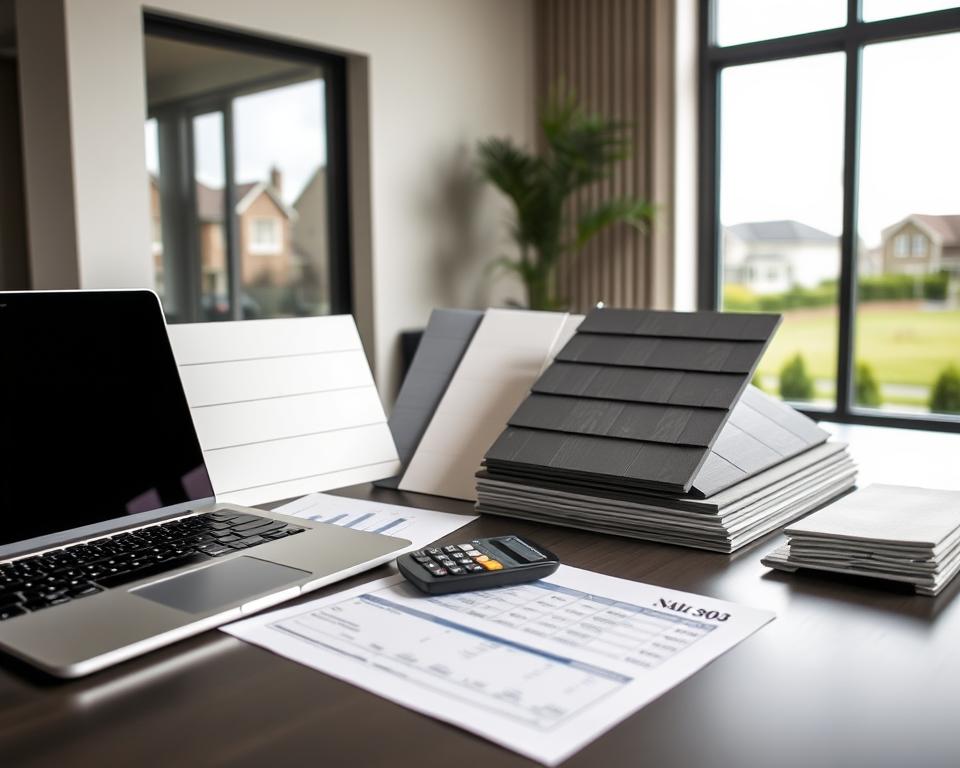
Homeowners should think about both the upfront cost and long-term savings. This helps decide if vinyl insulated siding is right for them.
Conclusion: Making the Right Choice for Your Home
Choosing the right siding for your home is key. It affects how your home looks and how much energy it uses. Vinyl insulated siding is a top pick in the home improvement world. It offers durability, efficiency, and great looks.
Vinyl insulated siding has many benefits. It keeps your home warm in winter and cool in summer, saving you money on energy. It also stands up well to damage. Plus, you can choose from many styles, profiles, and colors.
If you’re thinking about siding for your home, vinyl insulated siding is a great option. It’s a smart choice because it saves energy, lasts a long time, and can even increase your home’s value.
